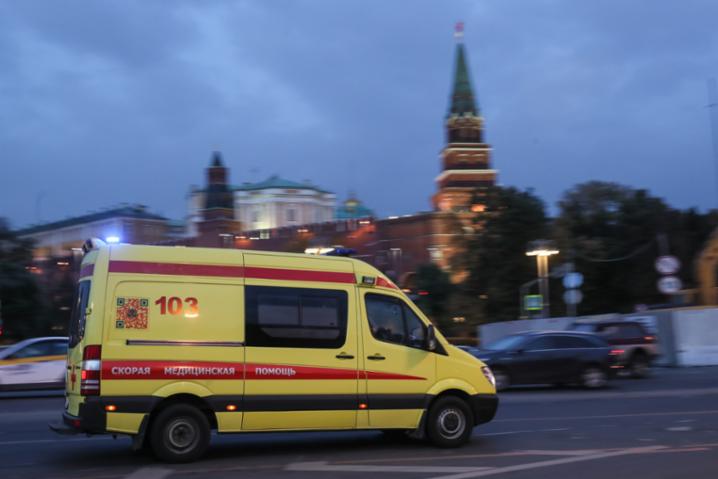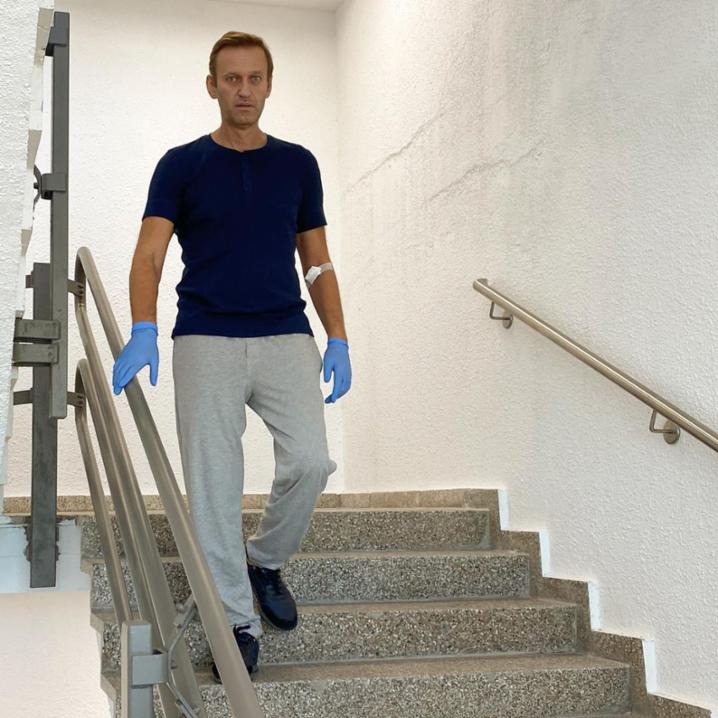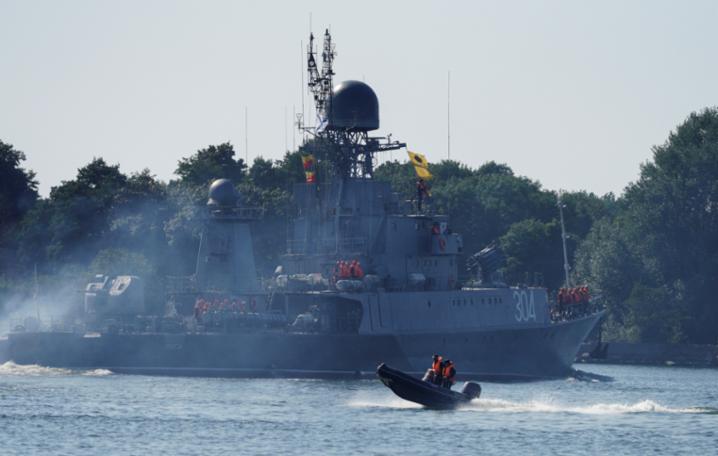Russia’s decision to suspend the activities of its delegation to NATO and shutter the Alliance’s offices in Moscow seems to represent a sharp worsening in relations with the West. However, digging beneath the surface, such moves often have less to do with global than domestic politics, or are, at least, the reflection of a series of processes taking place within Russia and the concerns of an ageing leadership whose priority is retaining power at home.
Admittedly, all international relations are shaped by domestic considerations, from the interests of ruling elites to the strengths of national economies, societies and polities. They are usually also disproportionately dominated by the senior leader, as foreign policy tends to be less constrained by public accountability and attention. Leaders who believe themselves under threat may amplify perceived external challenges to distract their population and justify repression, while those who feel their ascendancy or relevance to be declining may seek to find new purpose in international matters. All these factors apply especially strongly to modern Russia, and this has a particular relevance for NATO, as it looks to identify, deter and respond to any potential challenges from the East.

An ambulance vehicle drives along the Bolshoi Kamenny Bridge. 4,501 new confirmed cases of the novel coronavirus infection were reported in Moscow, and 13,634 in Russia on October 11, 2020, the highest rates since the start of the pandemic. Credit: Vladimir Gerdo / TASS via Reuters Connect
Beleaguered Kremlin
Recent years have seen a steady decay in the legitimacy of the regime within Russia, as the ‘Crimea effect’ that resulted from the generally popular annexation has worn off. A stagnant economy, in which wages fail to keep up with rising prices, official corruption, and the mishandling of the COVID-19 pandemic have all eroded support for President Vladimir Putin and, even more strikingly, the United Russia bloc which represents the Kremlin in parliament. The September elections to the lower chamber of the legislature, the State Duma, were widely characterised as heavily-rigged, with United Russia’s share of the vote assessed by some observers as being around 30%, rather than the 49.82% recorded.
This decay in public support has coincided with an increasingly belligerent and nationalist tone in the Kremlin’s rhetoric at home and adventurism abroad. To a degree, this appears to be essentially instrumental. The old social contract, whereby Putin promised continued improvements in Russians’ quality of life in return for political control, has clearly been broken. In its place, the Kremlin seeks to present the country as under threat, a beleaguered fortress surrounded by enemies which would deny it its rightful place in the world and reshape Russia as they see fit. As a result, the idea put forward by the Kremlin is that Russians ought to put aside their grievances and divisions, and show support for the regime for the sake of the nation.
However stridently this message is projected through the state’s propaganda channels, it appears to have only very limited success. Ordinary Russians may well have no focus for their dissatisfaction, but neither are they convinced that they are under a military threat – even the most hawkish Russian leaders tend to speak more broadly about a programme to, in the words of Security Council secretary Nikolai Patrushev, ‘destabilize the socio-political situation in the country, to inspire and radicalize the protest movement, and to erode traditional Russian spiritual and moral values.’
In addition, they clearly have no enthusiasm for foreign adventures – Crimea was a special case. Even in Ukraine’s Donbas, Moscow relied on proxies, while in the early days of the Syrian deployment, direct ground combat missions were conducted by mercenaries. Aware of the political risks in sending Russian soldiers into harm’s way, in wars in which most of the population felt no stake, the Kremlin relied instead on deniable proxies.
Gibridnaya voina
Although it is hard to be certain what happens within Putin’s innermost circle, it does seem that he and influential allies such as Patrushev, Federal Security Service (FSB) director Alexander Bortnikov, and Foreign Intelligence Service (SVR) director Sergei Naryshkin genuinely believe that there is a threat from the West. The Kremlin’s woes – from economic slowdown to the rise of opposition leader Alexei Navalny – are attributed to Western overt and covert manipulation. To them, hybrid warfare – gibridnaya voina – is something NATO uses against Russia, not vice versa.

Leader of the Russian opposition Alexei Navalny is pictured on the stairs of Berlin's Charité hospital, where he was treated for severe poisoning from August 22 to September 23, 2020. Navalny had published the picture on his Instagram account and thanked the hospital's "brilliant doctors". Credit: DPA via Reuters Connect
The decision to poison Navalny in 2020, for example, is likely to have stemmed from the belief that he was either knowingly working for the West to try and undermine the Kremlin, or else had become an ignorant pawn. Likewise, the continued political warfare campaign against NATO, using a variety of measures from disinformation to corruption to divide, distract and demoralise member states, is precisely intended to disrupt an alliance that Moscow realises is far more powerful in almost every sense – so long as it is united. Whether cheering on Catalan separatists or supporting radicals of the left or the right, the Russian goal is to neutralise NATO by destabilising it. Even adventurism outside the NATO area, from encouraging ethnic division in the Balkans to supporting the Venezuelan regime, can be understood largely as diversionary operations or attempts to gain traction or bargaining chips with the West.
This context is crucial not to excuse the Kremlin’s hostile activities, but to emphasise the degree to which it could be considered offensively defensive. In other words, just as in regular warfighting, Moscow regards the counter-offensive or even pre-emptive strike as a necessary element of the art of defence. In the current confrontation with the West, it feels its best defence is often to try and shatter the unity and will of its assumed antagonists.
Military manoeuvres
This tradition of ‘aggressive defence’ manifests itself in the continued reform and rearmament of the armed forces. The recent Zapad-2021 operational-strategic exercises, for example, were not only an opportunity to test and demonstrate a range of military capabilities, from the first battalion-strength night parachute drop in post-Soviet times to combined electronic warfare operations, they also offered a useful insight into Russian thinking. While the later stages of the exercise saw powerful counter-offensive operations, they were explicitly defensive, responding to a foreign threat.
Nonetheless, an apparent belief that NATO – or a coalition of Member States – could genuinely attack Russia (or Belarus) does continue to drive Kremlin thinking. While arming, training and planning for a potential conflict with NATO, the armed forces also play an arguably increasing role in the Kremlin’s wider political wars. Exercises, long-range patrols and aggressive confrontations at sea and in the air are staged to stoke fears of war in some European constituencies, in the hope of prompting calls for some grand bargain with Moscow. The massive concentration of forces on Ukraine’s borders in spring 2021 was not only intended to intimidate Kyiv, it also put pressure on new US President Joe Biden to meet with Putin in a summit that was presented as proof that Russia remains a great global power. Syria – where policy is driven by the Ministry of Defence, not Foreign Affairs – is at once a nation-sized training ground for the next generation of Russian officers, a demonstration of Moscow’s will and capacity to deploy beyond its borders, and a political enterprise through which pressure on the West can be dialled up or down at will.
No wonder that, after years of essentially plateaued defence budgets, the 2022-24 federal budget will see military spending rise by 15%, with an extra 129 billion rubles ($1.77 billion) bringing the total to 3.51 trillion rubles ($48 billion), with plans for continued rises to bring the overall budget in 2024 to 3.81 trillion rubles ($52 billion). Given the essentially stagnant nature of the Russian economy – and the fact that direct ruble-to-dollar comparisons substantially understate the effective value of the budget, which is in effect more like three to four times the dollar figure, this is clearly a serious commitment, raising the military’s share of the overall federal budget from 14.4% to 15.3%.
Political warfare
The intelligence budget is much less clear, wrapped within spending on security agencies such as the police and the paramilitary National Guard, whose combined funding is growing by 17% in 2022, the highest year-on-year increase since 2012. Nonetheless, reports suggest that the intelligence agencies will receive a disproportionate share of this, with more to come in subsequent years. Much of this will be directed towards domestic security and the suppression of potential opposition, but it is likely to fuel continued adventurism abroad, from espionage through to subversion.

Small anti-submarine ship Urengoy leaves a port during naval drills, which are staged by the Baltic Fleet forces of the Russian Navy, part of the military exercises Zapad-2021 opened by Russia and Belarus, in the Baltic Sea town of Baltiysk in Kaliningrad Region, Russia September 9, 2021. © Reuters / Vitaly Nevar
Indeed, the intelligence community are not only beneficiaries of this growing Kremlin tendency to connect foreign and domestic policy, and see external influence behind its internal problems. They are also actively supporting and spreading the notion. Patrushev – a former FSB chief – recently claimed that ‘Washington has no friends in the world, but only its own selfish interests’ and that it is actively meddling in Russian affairs. Likewise, SVR director Naryshkin claimed that ‘the United States of America and its allies are not abandoning their attempts to export their Western – I call them totalitarian-liberal – values in order to influence our state in terms of changing foreign and domestic policies.
Whether genuinely believed or simply a convenient political message (and the evidence suggests the former), the steady stream of such messages does inform and drive policy and, as far as can be seen, also shapes Putin’s view of the world.
A lasting problem
There is thus no likelihood of any substantive change in fundamental Russian policy so long as the Putin administration is in power. There is certainly scope for deterrence, negotiation and other measures to influence the Kremlin’s calculus of risk and opportunity. There is no doubt that NATO’s new capability targets make any direct military clash – already highly unlikely – even less palatable, even to the most hawkish of Russian nationalists, while potentially creating more space for dialogue. After all, while opportunistically happy to undermine NATO when it can, Moscow is realistic. It is certainly interested in exploring the scope for greater strategic stability, and may be willing to modify its behaviour relating to issues from cybercrime to political interference.
Nonetheless, these will be essentially tactical shifts. Moscow is extremely unlikely to change its basic assumptions: that the world is defined by competitive, zero-sum politics; that the West is actively trying to deny Russia its rightful status as a great power abroad while undermining the Kremlin at home; and that Russia must therefore fight back in the name of its own security. This is not some grand ideological or normative struggle, but it is an intractable one, as much of what the Kremlin regards as Russia’s right collide with international law and Western values – from hegemony over neighbours such as Ukraine and Georgia, to freedom from criticism over its internal politics.
Until a new political generation rises in Russia, offering not guarantees of improved relations but at least the opportunity to redefine them, the status quo will likely continue. To greater or lesser extents, NATO will have to deal with subversion, aggressive military signalling, direct and deniable adventures around the world, and a hostile and suspicious Kremlin.
The genuine belief that NATO represents an active threat to Putin and many of his allies, when combined with an inclination towards pre-emption, means that the risk of miscalculation leading to a direct clash cannot absolutely be excluded. However, this is mercifully unlikely. Moscow is well aware of its relative weaknesses compared with the Alliance. As a result, for all its muscular poses and confrontational rhetoric, it is essentially pragmatic and retains many avenues and instruments for de-escalation. Rather, Putin’s Russia will remain a problem more than a threat, one to be contained, mitigated and, where possible, managed, until the day comes when there is a chance to build something more positive and less antagonistic.
